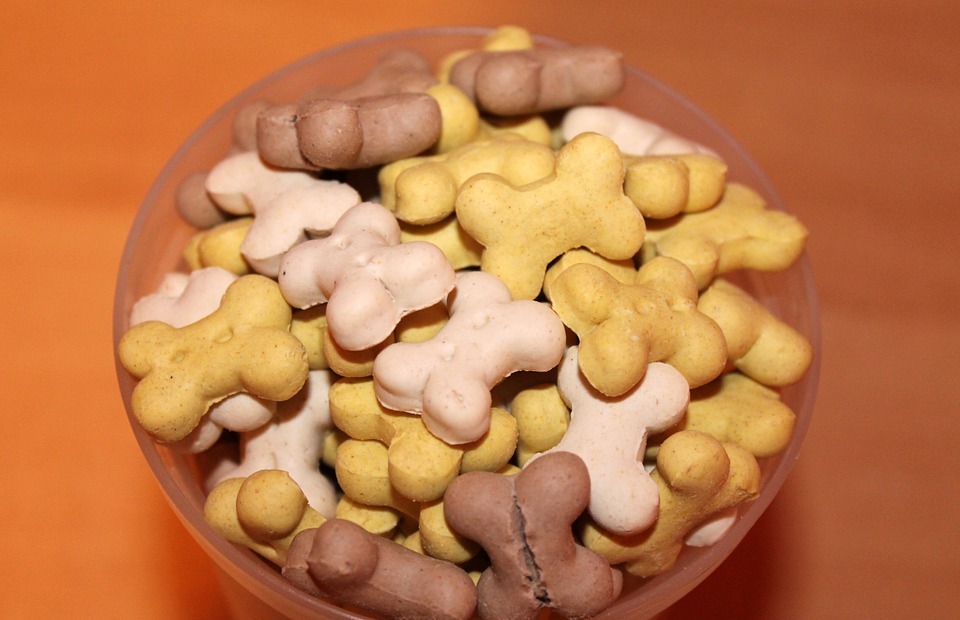This article provides a comprehensive guide to feeding rice to dogs, covering its benefits, risks, and safe feeding practices. It will explore different types of rice, the nutritional value, potential dangers, and essential considerations for dog owners. We will also delve into common questions regarding rice consumption in dogs, offering expert advice and insights.
Part 1: The Nutritional Value of Rice for Dogs

1.1. Carbohydrates and Energy
Rice is a good source of carbohydrates, providing energy for dogs. It is a complex carbohydrate, meaning it is digested slowly and releases energy gradually. This makes rice an ideal fuel source for active dogs or those with high energy needs.
1.2. Essential Vitamins and Minerals
While not a rich source of vitamins and minerals, rice contains small amounts of:
- Thiamin (Vitamin B1): Important for energy metabolism and nerve function. Thiamin deficiency can lead to neurological issues and heart problems.
- Niacin (Vitamin B3): Involved in energy production and DNA repair. Niacin deficiency can cause skin problems, digestive issues, and fatigue.
- Iron: Essential for red blood cell production and oxygen transport. Iron deficiency can lead to anaemia.
- Magnesium: Contributes to bone health, muscle function, and energy production. Magnesium deficiency can cause muscle weakness, fatigue, and seizures.
1.3. Dietary Fibre
Rice contains dietary fibre, which promotes healthy digestion and bowel movements. It helps regulate gut bacteria and can aid in preventing constipation. Fibre also contributes to a feeling of fullness, which can be helpful for dogs trying to maintain a healthy weight.
1.4. Protein Content
While not a primary protein source, rice contains a small amount of protein, which contributes to muscle growth and repair.
Part 2: Types of Rice Suitable for Dogs

2.1. White Rice
White rice is the most common type and is readily available. It is a good source of carbohydrates and is generally well-tolerated by dogs. White rice has been polished to remove the bran and germ, reducing the fibre content and nutritional value compared to brown rice.
2.2. Brown Rice
Brown rice is a whole grain containing the bran and germ, which offer additional nutritional benefits. It is richer in fibre, vitamins, and minerals than white rice. However, some dogs may find it harder to digest due to the higher fibre content. It has a chewier texture compared to white rice.
2.3. Wild Rice
Wild rice is not technically rice but a type of grass. It is a good source of protein, fibre, and antioxidants. While considered safe for dogs, it is less common and may be more expensive. It has a nutty flavour and a firmer texture than white or brown rice.
2.4. Rice Flour
Rice flour is made from ground rice and is often used as a thickening agent in dog food. It is a good source of carbohydrates and is readily digestible. It is also gluten-free, making it a suitable option for dogs with gluten sensitivities.
Part 3: Benefits of Feeding Rice to Dogs

3.1. Digestive Support
Rice is easy to digest and can be helpful for dogs with digestive issues. It can be used in bland diets to soothe upset stomachs and aid in recovery from diarrhoea or vomiting. The gentle nature of rice allows the digestive system to rest and recover.
3.2. Weight Management
Rice is a low-fat and low-calorie food, making it suitable for dogs who need to manage their weight. It can be used as a base for a weight-loss diet, providing energy without adding excess calories. It is important to consult with a veterinarian to determine the appropriate portion size for weight management.
3.3. Allergen-Friendly
Rice is generally hypoallergenic and is often used in dog food for dogs with food allergies. It is less likely to trigger allergic reactions compared to other grains, such as wheat or corn. Rice is a good alternative for dogs with sensitivities to common grains.
3.4. Post-Surgery Recovery
Rice can be helpful for dogs recovering from surgery. It is gentle on the digestive system and can provide the necessary energy during healing. The easy digestibility of rice reduces strain on the digestive system during recovery.
Part 4: Risks and Potential Dangers of Feeding Rice to Dogs
4.1. Overfeeding and Weight Gain
While rice is relatively low in calories, overfeeding can lead to weight gain. It is crucial to monitor your dog's calorie intake and adjust portion sizes accordingly. It is important to follow a veterinarian's recommendations for appropriate portion sizes.
4.2. Nutritional Imbalances
Rice alone does not provide all the nutrients a dog needs. Feeding only rice can lead to deficiencies in essential vitamins, minerals, and protein. A balanced diet that includes other protein sources, fruits, and vegetables is essential for dogs.
4.3. Cooking Practices
Raw rice can be difficult for dogs to digest and may pose a choking hazard. It is essential to cook rice thoroughly before feeding it to your dog. Ensure the rice is cooked until soft and no longer has a hard center.
4.4. Contamination
Rice can be contaminated with harmful bacteria or pesticides if not stored properly or cooked adequately. Always wash rice thoroughly before cooking and store it in a cool, dry place.
4.5. Individual Sensitivities
While rice is generally well-tolerated, some dogs may have individual sensitivities or allergies to it. If you notice any digestive issues, such as diarrhoea, vomiting, or itchy skin, after feeding rice, consult your veterinarian.
Part 5: Safe Feeding Practices for Rice in Dogs
5.1. Cooked and Plain
Always cook rice thoroughly before giving it to your dog. Avoid using seasonings, oil, or other ingredients that may be harmful. Stick to plain, cooked rice to avoid any potential complications.
5.2. Moderation
Rice should be fed in moderation as part of a balanced diet. Consult your veterinarian for recommended portion sizes based on your dog's age, breed, weight, and activity level. A balanced diet should include appropriate amounts of protein, fats, and other essential nutrients.
5.3. Introducing Gradually
If you are introducing rice to your dog for the first time, do so gradually. Start with small amounts and monitor for any digestive issues. A gradual introduction allows the dog's digestive system to adjust to the new food.
5.4. Freshness and Storage
Use fresh rice and store it properly to prevent spoilage. Cooked rice should be refrigerated and used within a few days. Refrigerate cooked rice promptly to prevent bacterial growth and discard any leftover rice after a few days.
Part 6: FAQ: Common Questions about Rice and Dogs
6.1. Can I give my dog leftover rice?
Yes, leftover cooked rice is generally safe for dogs as long as it is plain and has not been contaminated with harmful ingredients. Ensure it is refrigerated and used within a few days.
6.2. Is rice good for dogs with diarrhoea?
Yes, rice can be helpful for dogs with diarrhoea. It is a bland food that can soothe upset stomachs and aid in digestion. However, it should be given in moderation and alongside other essential nutrients.
6.3. Can puppies eat rice?
Yes, puppies can eat rice as part of a balanced diet. It can be a good source of carbohydrates and energy for growing puppies. It is important to consult with a veterinarian to determine the appropriate amount of rice for puppies.
6.4. What if my dog eats raw rice?
Raw rice can be difficult for dogs to digest and may pose a choking hazard. If your dog has eaten raw rice, monitor them for any signs of digestive upset and contact your veterinarian if necessary.
6.5. Can I give my dog rice every day?
While rice is safe for dogs, it should not be the primary food source. It should be fed in moderation as part of a balanced diet. A balanced diet includes other protein sources, fats, fruits, and vegetables.
6.6. Is rice bad for dogs with kidney problems?
Rice can be a good source of carbohydrates for dogs with kidney problems. It is generally low in phosphorus and potassium, which are important considerations for dogs with kidney disease. However, consult your veterinarian for specific dietary recommendations. Kidney disease often requires a special diet formulated by a veterinarian.
Conclusion
Feeding rice to dogs can be a safe and nutritious practice when done correctly. It provides energy, digestive support, and can be part of a balanced diet. However, it is essential to feed rice in moderation, ensure it is cooked thoroughly, and avoid any added ingredients that may be harmful. Always consult your veterinarian for any dietary concerns or specific recommendations for your dog's individual needs.
Everyone is watching
-

Can Dogs Eat Bananas? A Guide to Safe Treats
DOGS & PUPPIESThis comprehensive guide will delve into the world of canine nutrition, focusing on the popular question: can ...
-

Can Dogs Eat Oranges? (Is It Safe or Toxic?)
DOGS & PUPPIESThis article delves into the question of whether dogs can safely consume oranges. We'll explore the nutrition...
-

Can Dogs Eat Grapes? The Shocking Truth About This Fruit
DOGS & PUPPIESThis article delves into the controversial topic of grapes and dogs, exploring the potential dangers associate...
-

Why Do Dogs Eat Poop? Understanding Coprophagia in Dogs
DOGS & PUPPIESThis article delves into the perplexing phenomenon of coprophagia, the act of eating faeces, in dogs. We explo...
-

Can Dogs Eat Shrimp? A Guide to Safety and Risks
DOGS & PUPPIESThis comprehensive guide dives into the world of shrimp and dogs, exploring the potential benefits and risks a...
